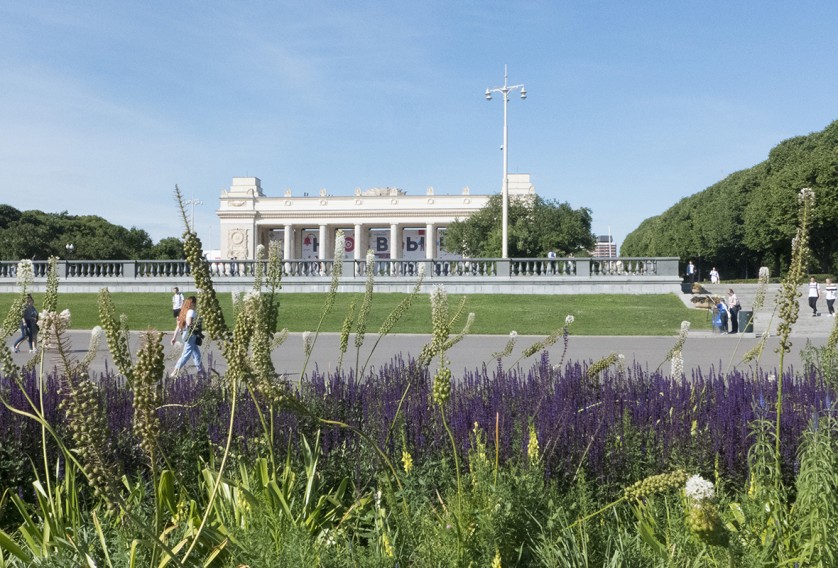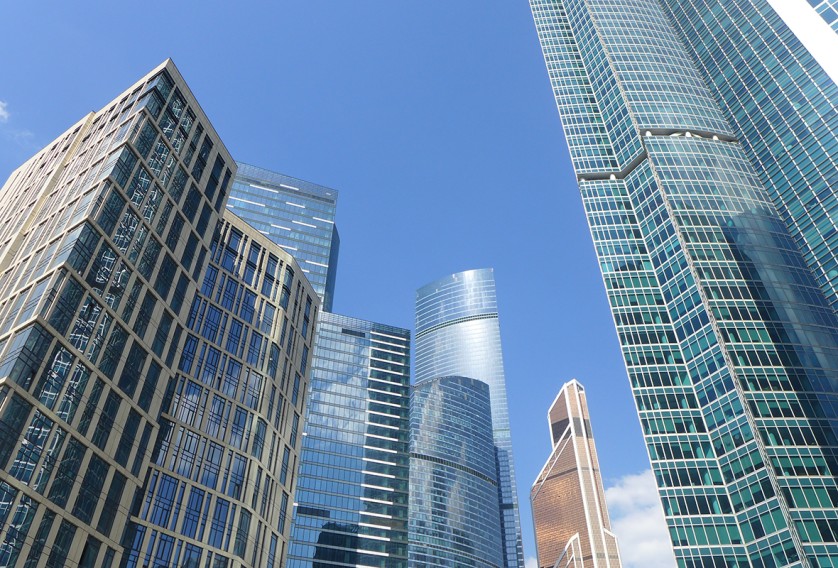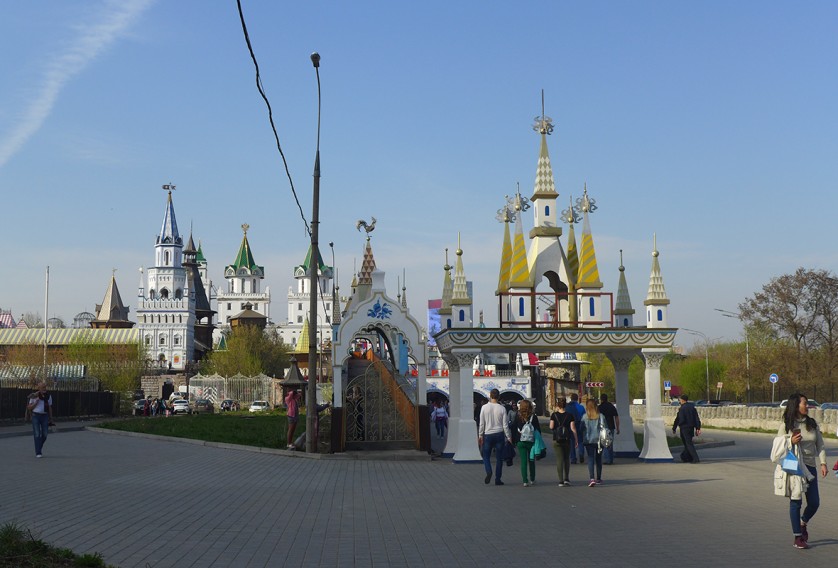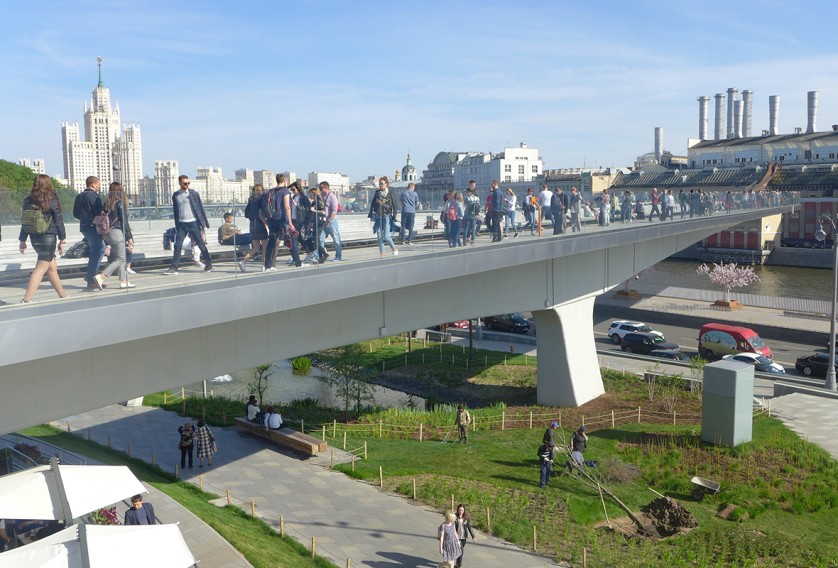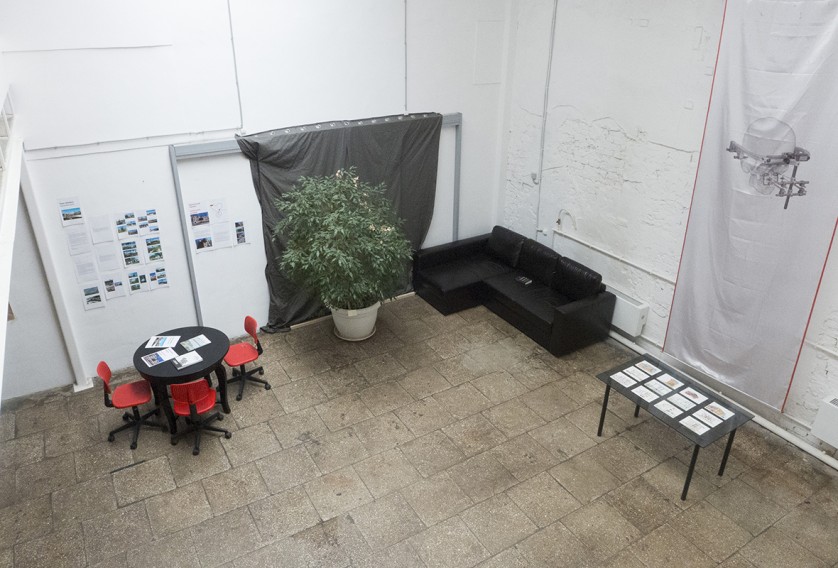Vasilena Gankovska
Monumental is the word that first comes to my mind when I think of Moscow: wide avenues, huge buildings from different times, apparently endless residential areas (called 'microraions’) and, in the middle, a fairly compact, extremely clean city centre. You quickly note that very much has been done in urban development in recent years. Nevertheless, an attentive observer can find small contradictions and inconsistencies that made me smile whenever I noticed them. If you want to see classic late-socialist panel-block estates, you are recommended to go to the numerous residential areas on the periphery that are accessible by metro lines. The big urban development plans are also visible there, but the architectural heritage of the 1990s predominates – fast-moving, variegated and somehow in bad taste.
During the last month of my residency, I moved around a lot in many districts in the outskirts within the framework of a project initiated by Simon Mraz, director of the Austrian Cultural Forum in Moscow. Whenever I returned to the surface after a metro ride, I was greeted by a similar but unique scenery. What I liked least was to end up in the middle of a shopping mall where everything was to appear impersonal and global; what I liked best were the small ponds attracting anglers (almost exclusively men) or old ladies who fed the pigeons.
They tried to reconstruct a similar urban idyll at the Zaryadye Park, but the only thing that turns out well there are the selfies taken on the tip of the platform above the Moskva River.
At first sight, the studio at CCI Fabrika situated in the Basmanny District also appears to be large and monumental. I spent my first days exploring my neighbourhood. The vicinity of the Fabrika is of historical interest – in the vicinity, there are a constructivist workers’ estate and a few smaller historic objects. Toward the city centre, there are a few sights to see – for example the small Café Paros (opposite Elochovskaya Church) and Bauman’s Garden. After exploring the different parts of Moscow for three months, I have really taken the Fabrika area and the Basmanny District into my heart.
| 1. | My stay in one word: |
| Productive | |
| 2. | Things I miss since I am no longer there: |
| The skylight of the studio and the big, wide streets. Also the fact that the staff of the small cafés is very communicative and polite. | |
| 3. | Dos & Don'ts at this place?: |
| In general, I felt at ease in the city. If your residency is in summer, you must go to one of the numerous swimming lakes on Moscow’s periphery. There are also small ponds there. Although they are not suitable for swimming, they still are worth a visit in order to study the bathing habits of the city people. There are certainly alternatives for the winter months. | |
| 4. | Where you can buy great supplies: |
| There are several stores, such as Peredvizhniki (Передвижники) and Krasniy Karandash (Красный Карандаш). Both have branches close to the Fabrika. Every big mall has electronics shops where you can get memory cards, cables, etc. You can find props and objects from the Soviet era in the flea market in Izmaylovo. | |
| 5. | What you should definitely bring with you from home: |
| The only thing I actually took along from Vienna were the filters for the Brita pitcher that supplied me with drinking water. You can buy everything else in Moscow. | |
| 6. | On art at my residency place: |
| It becomes clear very soon that the scene is quite modest. On the one hand, there are the big, state-funded institutions, private museums such as GARAGE and institutions such as the V-A-C Foundation (to open in 2019). On the other hand, there are a few small initiatives and artist-run-spaces such as the Elektrozavod gallery and the room of the ARXIV collective. Art education institutions and private schools are also highly active, e.g. ICA Moscow and the British Higher School for Art and Design. Many exciting projects take place at locations such as CCI Fabrika where our studio is. They are frequently organised by independent curators and offer a good social programme and networking opportunities for the residency. | |
| 7. | Around the studio – this is where I go shopping, drink a coffee and get the best lunch specials within walking distance: |
| During my stay, the small Café Brew opened on the Fabrika premises. It offered espresso and drip coffee at affordable prices. While you wait for your coffee there is time for the inevitable small talk in Russian with the barista, a nice and curious person. There is a relatively new supermarket chain named VKUSVILL that sells regional and imported organic products from small producers. It also has convenience food of good quality. It is not easy to find places for having lunch in the immediate vicinity, but there is a small restaurant serving Caucasian cuisine near the Baumanskaya metro station. |
|
| 8. | Where I like to spend the evening (dinner, drinks and best sound): |
| There are several bars and small restaurants serving international cuisine in Pokrovka Street that you can quickly reach from the Fabrika by two bus lines. The neighbouring alleys also offer much to be discovered. In summer, long urban strolls are a must in the evenings. Pluton and NII (also outdoors in summer) are the locations relevant past midnight. This is also where many people from the local arts scene meet. | |
| 9. | What I would have liked to know about the studio already at the start of my residency: |
| / |
Website resident: vasilenagankovska.com




